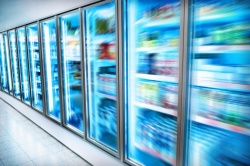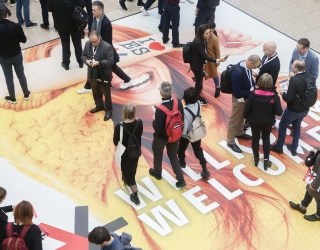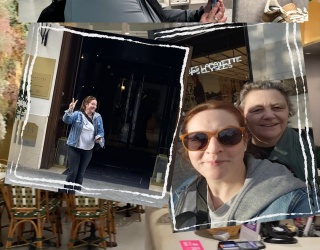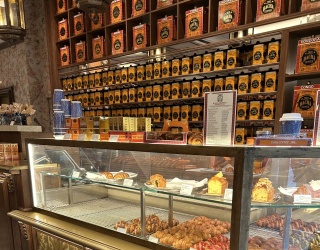
Increasing energy efficiency is and remains a major factor in retail. After all, you are not just able to save costs in this area, but also improve your image. Sustainability is very important to the modern consumer and no retailer can afford to ignore this subject.
The key to both is comprehensive management. It makes it possible for retailers to manage his or her cooling and heating systems so to utilize a large percentage of existing energy – waste heat produced by cooling systems can be used to heat a supermarket during the winter for instance. For this to work however, the systems need to be integrated in as much of a seamless and intelligent manner as possible.
Energy costs continue to increase
This trend also continued last year: energy costs in retail have increased, in part even significantly by up to 25 percent compared to 2012. This was a finding by the EHI Retail Institute’s "Energy Management in Retail 2013" study. The surveyed retailers consider state taxes that make up 50 percent of costs at this point to be the largest price gouger. Since 86 percent of study participants had to deal with increasing energy costs last year, it comes as no surprise that the willingness to invest in energy-efficient systems has also increased.
High costs in food retailing lead to a growing willingness to invest
The amount of energy costs strongly depends on the industry sector, especially as it pertains to retail. According to data by the EHI, almost 63 Euros per square meter of sales area are incurred by energy. At 41 percent, cooling systems make up the lion’s share of energy consumption, followed by lighting and air conditioning at 27 and 14 percent, respectively. The non-food retail sector needs to spend an average of 36 Euros per square meter of sales area on energy, of which lighting by its nature makes up the biggest percentage at 53 percent, since there are no energy-intensive cooling systems in this area. Air conditioning holds a 22 percent share in the overall energy costs.
All retail sectors however share an increasing willingness to invest in energy-efficient systems. 86 percent of retailers want to continue investing in lighting systems, with most retailers wanting to invest in energy-saving LED lights. Many however still consider the price for the respective solutions too high for a comprehensive use. The importance of refrigeration technology in food retailing can also be seen in the strong willingness to invest, which has been constant at 80 percent since 2010.
Integrated systems and comprehensive management are standard in the industry sector
By now, most retailers utilize continuous energy optimization through the integration of different refrigeration systems, since they are the largest energy user at 41 percent and thus offer the biggest potential savings. The use of waste heat recovery systems – that being the use of waste heat recovered from cooling processes to heat or for water heating – can be seen as standard across the entire industry sector at this point.
“Top Retail Product 2014“ combines cooling, air conditioning, heating and ventilation
According to the EHI, most grocery retailers already use waste heat recovery systems, usually embedded in a complete system that manages refrigeration, heating and air conditioning. Daikin offers such a system for instance with its Conveni-Pack, which was awarded “Top Retail Product“ at the EuroShop 2014. It is the first mass-produced complete system that combines normal and low temperature refrigeration with air conditioning, heating and ventilation in one circuit.
The waste heat produced from cooling groceries is entirely used to heat the supermarket during the winter. This results in energy savings of approximately 40 percent per store. Gunther Gamst, Director of Daikin Airconditioning Germany is convinced that “by taking a holistic view of a building and combining the elements of heating, air conditioning, cooling and ventilation, potential savings can be maximized”.
Supermarket operators can do without a conventional heating system by using this type of system, since the heat energy from the cooling positions is utilized directly through the air conditioning units to heat the sales floor during transitional periods. During the winter, the heat pump can effectively extract heat from the outside air and add this heat energy to the waste heat. The waste heat from the cooling positions and the sales floor that is not needed during the summer months is discharged to the outside air.
Topic event in November 2014 in Bonn, Germany
Energy optimization is and remains an important topic for retail in light of the increasing costs and has lost none of its topicality this year. Retailers are worried about the future and expect another increase in energy costs at an average of 8.5 percent within the next three years according to the EHI survey.
This is also evident at the annual symposium on “Energy Management in Retail“, hosted on November 11- 12, 2014 in Bonn by the EHI and the trade associations BTE (Association of German Textile Retailers, German: Bundesverband des deutschen Textileinzelhandels), BVL (The German Logistics Association, German: Bundesvereinigung Logistik), BVT (German Federal Association of Technology Retailers, German: Bundesverband Technik des Einzelhandels) and BWB (German Home and Office Association, German: Bundesverband Wohnen und Büro). Among others, this year’s topics include determination of energy indexes, dealing with “energy hogs“ and potential holistic energy concepts. For more information on this event, click on www.energiekongress.com.
Author: Daniel Stöter, iXtenso.com








